Discover the power of antibiotic therapy in controlling mastitis in lactating and dry cows. Learn how to effectively use this treatment for healthier, more productive herds.
As you delve into the intricate world of dairy cow health. An unavoidable subject you will encounter is the pivotal role antibiotic therapy plays in controlling mastitis. This malady can substantially impact the health and productivity of lactating cows. Multiple therapeutic strategies exist, each possessing their respective pros and cons. You’ll learn that lactational therapy is commendable in its fight against Streptococcus agalactiae infections. However, its efficacy stumbles when dealing with other mastitis-causing agents, such as Staphylococcus aureus.
Considering these challenges, veterinary medicine has been pushed to think outside the box, prompting the development of innovative treatment tactics. One such effective alternative is a blend of intramammary infusion and the parenteral administration of antibiotics, a two-pronged approach proving successful in curing quarters affected by S. aureus. To crank up the cure rates, extended therapy that involves prolonged drug administration has been introduced.
Interestingly, our armory isn’t only filled with antibiotics. Non-antibiotic strategies, like oxytocin injections, offer a valuable solution. Nevertheless, these alternatives can potentially have excessive relapse rates, positioning particularly vulnerable herds at risk. In the perennial battle against bovine mastitis, it’s worth noting that therapy for dry or non-lactating cows almost always trumps lactational therapy, courtesy of their superior cure rates and preventative effects against new mastitis cases.
In this era where antibiotic stewardship weighs heavily, selective dry cow therapy is emerging as a popular choice. Additionally, teat seals – that combat new infections independent of antibiotics – are increasingly catching the eye as a potentially attractive option. Join us as we break all this down, providing you with the necessary resources you require to protect your beloved bovine companions effectively.
Stamping Out Incidences of Mastitis
Consider this journey of mastitis control akin to a chess match against a challenging opponent. Despite feeling swamped, remember your arsenal of tools available to checkmate this disease. Among your available strategies – spontaneous recovery, culling chronically infected cattle, lactation and dry cow therapy – antibiotic treatment deserves a special mention. As the primary reason antibiotics are used in dairy cows, this approach plays a crucial role in your combative strategy against mastitis. However, its efficacy isn’t merely determined by administration. The antibiotic must permeate each infected site within the suffering quarter, maintaining its presence long enough to annihilate the invading microorganism forces. It’s akin to dispatching a team into enemy territory, their mission being to incapacitate the aggressors. Sounds daunting, doesn’t it? But fear not, let’s untangle this complex web and break down the how-tos of antibiotic therapy.
Here are your key objectives in any successful antimicrobial therapy:
- Enhancing the cow’s well-being
- Restoring regular milk production and quality
- Preventing mortalities in extremely acute cases
- Eradicating infectious microorganisms
- Stopping new infections, particularly during the dry period
- Avoiding drug residues in milk and meat
- Preventing the worsening of existing cases
- Minimizing damage to milk-producing tissues
- Halting the spread of current infections to other cows
- Boosting the overall health of the herd
The Role of Antibiotic Therapy in Battling Mastitis Infections and Spontaneous Recovery
You might be wondering now, what role do antibiotics play in this context? They are typically used as the first line of defense against mastitis. Broad-spectrum antibiotics are commonly administered when the particular bacteria causing the infection are not distinctly known. Antibiotics work by either inhibiting bacteria growth or directly killing them, providing essential aid to the cow’s immune system. Remember, a genuine ally is just as crucial as a formidable defense.
However, incorrect or unnecessary use of antibiotics can raise concerns about antibiotic residues in milk and the development of microbial resistance. In fact, it has been estimated that 60-70% of all antimicrobials used on dairy farms are for preventing and treating mastitis. Hence, the need for judicious use of antibiotics cannot be overemphasized. As per research by Morin D.E., Shanks R.E., McCoy G.C., the appropriate choice of antimicrobials proves critical to the success of mastitis treatment. Broadly speaking, antibiotics should be used after a careful analysis of the bacteria involved, cow’s health status, and the potential effect on milk quality and safety.
Interestingly, there’s a silver lining amidst this antibiotic adversity. The fact that various plant species have shown antibacterial effects against mastitis-causing bacteria, offers a potential alternative to antibiotics. This could open new doors in the realm of mastitis control where the concern over antibiotic resistance constantly looms large.
It’s also crucial to consider other strategies for mastitis control beyond treatments. Bedding pathogen control, for example, plays a significant role in environmental mastitis reduction. Digital medicine offers opportunities for efficient veterinary care, and dietary and nutritional adjustments could also significantly impact mastitis incidence and management.
To encapsulate, the road to mastitis control must indeed be shouldered by both antibiotics and the cow’s immune system. But let’s not forget – care, management, and alternative strategies should assume equal importance for a truly triumphant battle against mastitis in our valuable dairy cows.
Chronically-Infected Cows: The Need for Culling and Vaccine-Based Recovery Solutions
The question you may find yourself asking is, “Why cull chronically infected refractory cows?” It’s a difficult decision, but one that often becomes necessary when dealing with stubborn infections that resist multiple treatment efforts. Astoundingly, research findings suggest that a small segment of the herd accounts for a substantial portion of all clinical mastitis incidents. Just 7% of cows are responsible for nearly 40% of all clinical mastitis instances.
Moreover, an estimated 50% of all discarded milk is attributed to a shocking 6% of the cows, based on additional studies. Possessing milk that’s unfit for human consumption presents more than just health risks—it also imposes a significant financial burden on farmers.
So, do all infected cows frequently suffer from mastitis? The statistics certainly suggest so. Studies show that 64% of cows that have endured two mastitis cases during the current lactation are expected to experience another before the lactation period concludes. That figure escalates to 70% for cows that have already encountered three cases of clinical mastitis. As a further consideration, we shouldn’t ignore that older cows are more prone to mastitis than their younger counterparts.
One might wonder what leads to this recurring issue of mastitis in certain cows. Contagious pathogens including S. aureus, Strep. agalactiae, or Mycoplasma spp. are often the likely suspects. Cows chronically infected with these pathogens, exhibiting consistent bouts of clinical mastitis, become carrier reservoirs for these harmful bacteria. Regrettably, these cows pose a risk of disease transmission within the herd.
So, what are the implications for the dairy farmer? Unfortunately, cows with chronic infections, aside from being unproductive and financially draining, pose a significant threat to the herd’s health by increasing the infection risk for healthy cows. Consequently, for the long-term health and productivity of the herd, these cows may need to be culled—a difficult but necessary step.
Navigating the Complexities of Antibiotic Use in Managing Mastitis Amid Lactation
Let’s delve into the crucial subject of managing mastitis with antibiotics during the lactation period. The crux of the issue is that antibiotic therapy is essential in battling mastitis while a cow is lactating. The necessity for this comes from the ineffective nature of spontaneous recovery and culling in fully eradicating mastitis infections from a herd.
Though antibiotics promised a seemingly bright future when they were first introduced back in the 1930s and 1940s, we’ve come to understand their limitations. They may not cure chronic infections, still they’re pivotal in treating existing infections, consequently saving numerous cow lives.
The struggle for dairy farmers then morphs into how to optimally utilize antibiotics among other medications. Immediate and appropriate care becomes essential if a clinical case arises during lactation. In general, lactation treatment becomes a requirement when infection comes from strep. agalactiae, the herd exhibits a somatic cell count(SCC) exceeding 200,000 per milliliter (ml), or if clinical mastitis is evident.
The instance of acute clinical mastitis, though rare, can become serious, requiring a specific care approach. Here, the goal shifts to alleviating the cow’s distress and pain, which thereby improves their overall well-being. This can be achieved through a combination of strip milking, specific antibiotics, electrolyte fluids, anti-inflammatory drugs, and a careful administration of essential nutrients like glucose, bicarbonate, and calcium. It’s important to note, however, that not every antibiotic is effective against the bacteria causing acute mastitis, which is where supportive therapies and selected anti-inflammatory drugs play a crucial role in combating endotoxin-induced shock.
In contrast, subacute clinical mastitis, a frequent condition in herds, demands a slightly unique approach. The treatment method is through an intramammary infusion with an FDA-approved lactating cow product, combined with consistent hand milking. The key here is to sustain the treatment for a minimum of 24 hours after the clinical symptoms have disappeared. An interruption in medication could merely suppress the infection, not fully eradicate it.
Subclinical mastitis, being the most prevalent form of mastitis, is a stealthier condition. It can’t be diagnosed through a physical examination of the mammary gland or milk. Therefore, it becomes paramount to treat these undetectable subclinical infections concurrently with the overt clinical ones to lower the mastitis level in the herd and the SCC levels in the bulk tank. Adhering to antibiotic label instructions becomes paramount for peak efficacy.
Lactation therapy treatment is most productive against strep. agalactiae. When it comes to other infections caused by coagulase-negative staphylococci (CNS), environmental streptococci, S. aureus, and coliforms, the conventional lactation treatment isn’t recommended due to low cure rates. These types of infections are better managed when drying off or with alternate treatment methods.
When battling mastitis in cows, the key to success lies in a strategic and personalized treatment plan, incorporating judicious use of antibiotic therapy, supportive treatments, and a steady monitoring of the cow’s health status.
Strategies for Mastitis Treatment During the Cow’s Dry Period
Considering mastitis’ widespread prevalence, you might question the significance and efficiency of antibiotic therapy, especially during the dry period. This period is when cows aren’t lactating before birthing a calf. Without treatment during this crucial transition phase, an estimated 8-12% of all cows’ quarters will potentially develop a new infection. These infections could be diagnosed at calving, leading to potentially reduced milk production.
The prevention impacts are extensive. Believe it or not, stopping merely 1% of quarters from getting infected during the dry period could cover the entire cost of a dry cow treatment program. This is particularly impactful for herds with low mastitis levels. In such cases, preventing new infections during the dry period often outweighs curing existing ones.
Comprehensive mastitis treatment strategies incorporate blanket dry cow therapy, where all quarters of all cows receive treatment at the drying-off stage. Such treatment targets existing infections, primarily contagious pathogens-induced and inhibits new infections chiefly triggered by environmental pathogens.
Blanket dry cow therapy, aside from its mastitis’ effectiveness, offers several additional advantages:
- Attaining higher cure rates compared to lactating periods. This is possible through the use of slow-release products that uphold efficient antibiotic levels for extended periods in non-lactating udders.
- Reducing the incidence of new infections during the dry period.
- Allowing damaged milk-producing tissues the chance to regenerate before freshening.
- Decrease the incidence of clinical mastitis at freshening.
- Preventing milk contamination with drug residues. All potentially infected sections receive antibiotic treatment, eliminating the necessity for laboratory tests or screenings.
In a bid to minimize antibiotic usage, there’s been an increased adoption of selective antibiotic dry cow therapy. Here, treatment is restricted to only infected or potentially infected quarters (or cows). This select approach is motivated partly by the aspiration to cut antibiotic costs, decrease drug use, and slow down developing antibiotic-resistant bacteria. Usually, the selection criteria are based on milk culture tests and/or somatic cell count (SCC) levels.
For SCC, a reasonable treatment threshold is above 200,000/ml. For sections deemed uninfected, like those with SCC levels below 200,000/ml, internal teat sealants might operate as a preventive measure against fresh infections.
Recent research emphasized that in cows with low SCC (<200,000/ml at drying-off), opting only to treat cows diagnosed with udder infections using both dry cow therapy and an internal teat sealant was just as effective as blanket dry cow therapy applying both products. Other studies unveiled that using an internal teat sealant independently in low-SCC cows was especially useful against most bacterial infections, surpassing dry cow therapy at preventing coliform infections at calving.
Summarizing 12 trials evaluating internal teat sealants and dry cow therapy, a recent study discovered that using both products or a teat sealant individually were equally effective at decreasing the number of new infections and clinical mastitis cases at calving. However, integrating dry cow therapy resulted in reduced SCC at calving, suggesting the antibiotic successfully treated existing infections at drying-off, thus dropping the SCC.
By staying informed with this continuous research, dairy farmers can make well-informed choices about mastitis control, leading to healthier cows and increased milk yields. To deepen your understanding, explore how to control bedding pathogens to decrease environmental mastitis and understand boosting udder health: the role of microbial bedding conditioner in maintaining superior bedding quality.
Infusion Techniques: What You Need to Know
You’re probably quite familiar with the critical role of infusion procedures in administering intramammary treatments for mastitis. Often, these treatments are administered immediately after the milking machinery is removed, capitalizing on the clean udder and teats resulting from your careful hygiene routines and the machine’s cleansing actions. But, it’s key to remember that, despite these precautions, the teat’s end is always laden with mastitis-causing bacteria post-milking.
Before infusion, it’s essential to minimize the bacteria that could breach the teat canal. This bacteria could include harmful organisms like E.coli, Pseudomonas spp., Prototheca spp., Truperella pyogenes, Nocardia spp., and yeasts, which could lead to serious complications. Considering their resistance to antibiotics and their capability to render a cow’s quarter nonfunctional, maintaining a strict regime to avoid their introduction is paramount.
To mitigate microbial contamination, scrub the teat end vigorously with a 70% alcohol pledget, generally provided with commercial mastitis tubes, or with cotton balls soaked in 70% alcohol. Don’t stop scrubbing until the cotton balls or pledgets appear unstained after multiple scrubs. Let the teat end dry before administering treatments. It’s advisable to wear gloves, especially when highly contagious microbes like Strep. agalactiae or Mycoplasma bovis are suspected to be present within the herd. Also, dip your hands in a sanitizing solution before treating each animal to prevent the spread of pathogens.
Believe it or not, the method of drug infusion can inadvertently cause mastitis. This occurs when microorganisms, like the ones mentioned earlier, are introduced through the teat canal due to improper technique. Fully inserting the traditional mastitis tube syringe cannula can lead to a temporary dilation of the teat sphincter muscle and dislocation or partial removal of the keratin plug that typically occludes the teat canal. This creates a larger-than-normal opening in the teat canal, making it a portal for microorganisms, often further complicated when the intruders turn out to be resistant to the infused antibiotics.
Research has brought forth evidence comparing conventional full insertion and partial insertion, with only the first 1/8 inch of the cannula tip (about 2 to 3 millimeters). The findings suggest that new mastitis cases can be significantly reduced with the application of the partial insertion technique. Concurrently, several types of syringe cannulas have been developed to support this method, mainly aiming to form a seal against the teat’s opening during the infusion to provide support. Adopting this technique might reduce new infections at calving by 50% or more.
With the main goal being to assist the cow’s natural immune defenses in eliminating microorganisms, intramammary therapy often follows label instructions. However, dealing with chronic intramammary infections, especially those prompted by S. aureus and environmental Streptococci like S. uberis and S. dysgalactiae, sometimes necessitate a reevaluation of treatment strategies. Such infections tend to resist conventional intramammary therapy since locally infused antibiotics may not present in sufficient concentrations over an adequate length of time to fully eradicate the bacteria in the affected quarter.
Complicating matters further, the presence of scar tissue, mammary tissue swelling, and milk duct blockages, a common response to S. aureus mastitis, can render the bacteria inaccessible to the infused drug. Consequently, these microbes continue to multiply in the milk-producing tissues of the gland. To address this, researchers have studied various treatment methods in an attempt to up the cure rates against mastitis-causing bacteria, including procedures such as extended therapy and combination therapy.
Extended Therapy
A somewhat unconventional procedure, the extended therapy involves the on-label use of a relatively new mastitis drug, Pirsue® (pirlimycin hydrochloride) which when infused over an extended period, has shown potential in TCW Gertiredcuring chronic mastitis. Primarily, the product label instructs the user to infuse one syringe into each affected quarter repeating the treatment after 24 hours. For extended therapy, however, this daily treatment may be repeated at 24-hour intervals for up to eight consecutive days with a milk discard time of 36 hours after the last treatment.
A previous treatment protocol, which saw the use of three series of on-label treatments of Pirsue® (two infusions 24 hours apart), separated by 36-hour milk discard periods, was evaluated in a commercial dairy herd experiencing S. aureus mastitis issues. The results showed an average cure rate of 86% of quarters against the organism, and a substantial decrease in SCC in the cured infected quarters to 280,000/ml from a staggering 3,400,000/ml.
Combination Therapy
Met with substantial evidence, research supports that combination therapy, involving intramuscular injections in conjunction with intramammary infusions results in higher antibiotic concentrations in infected mammary tissues. Subsequently, this can improve the cure rate of mastitis over intramuscular injections or intramammary infusions alone.
One university study found combination therapy more effective in curing chronic S. aureus infections than intramammary infusions alone. In this study, one group of Jersey cows received intramammary infusions at each milking for six milkings with a lactating cow product containing 62.5 milligrams (mg) Amoxicillin (Amoxi-Mast®). Another group of cows received the same regimen but also received intramuscular injections of 6 million units of Procaine Penicillin G after each milking for three days. With 51% of cow quarters cured compared to 25% for intramammary infusion alone, combination therapy proved approximately twice as effective as conventional infusion alone.
While these treatment strategies are being developed and optimised, it’s critical for dairy farmers to understand that all antibiotic therapies result in relatively low initial SCC in quarters that actually cure. Those with very high initial SCC, however, often result in treatment failures.
Caring and Medicinal Support: Optimizing the Health of Infected Cows
When it comes to addressing mastitis, there’s nothing quite like supportive therapy and quality nursing care. As you navigate the path to recovery, these two elements are essential. Especially in cases of clinical mastitis, dedicated, high-quality nursing care can be the primary catalyst for the improvement of animal wellbeing and the acceleration of recovery.
Let’s think about what this looks like in practical terms. Firstly, not to be underestimated, is the fundamental aspect of providing fresh drinking water and high-quality hay for the affected dairy cows. More than just meeting basic needs, this can provide crucial sustenance. For the environment, consider the ambient conditions: it should be comfortable, well ventilated, clean, and dry. These factors are not only conducive to the overall well-being of the cows but actively help to curtail the spread of the infection.
Another critical intervention is the frequent hand stripping of the infected quarters. This method offers several benefits; it’s a practical way to detoxify the area by removing harmful substances that result from infection. Furthermore, the application of the milk let-down hormone, oxytocin, is an impactful method as it aids in the comprehensive elimination of milk, debris, and toxins. But worry not, we will delve deeper into the intricacies of oxytocin treatment later.
In more severe cases, where gangrene may develop, a quick surgical removal of the teat by a professional veterinarian could be a life-saver. This procedure increases the drainage of destructive substances and enhances the odds of fully salvaging the afflicted cow.
If corticosteroids are considered to be used alongside as an additional therapy, be aware of the risks. Usage of such substances can potentially increase the chances of a subsequent bacteremia (a condition where bacteria enter the bloodstream). Therefore, you should proceed with extreme caution, balancing the potential rewards with the real risks.
Exploring the Use of Oxytocin in Treating Mastitis
Have you ever considered alternatives to antibiotics in the fight against mastitis? Oxytocin, often referred to as the ‘milk let-down hormone’ due to its role in helping cows release milk, has proven to be a valuable resource. Secreted by the brain in response to stimuli associated with milking, oxytocin triggers the contraction of the milk-producing cells within the mammary gland, driving the expulsion of milk. Consequently, administering exogenous (or injectable) oxytocin could potentially flush out residual bacteria-laden fluid post-milking, thereby aiding infection elimination and ridding of inflammatory by-products and bacterial toxins.
Practicing veterinarians often recommend frequent stripping of affected quarters (about six times a day) post oxytocin administration (typically 40 to 50 units delivered intramuscularly). This can be accompanied by a supportive therapy using aspirin or banamine for additional aid. Notably, most cows begin to recover from clinical symptoms within 24 to 48 hours.
One research experiment introduced oxytocin intramuscularly at 100 units every 12 hours over two or three milkings in an attempt to treat mastitis cases. The resulting clinical recovery rate, i.e., the return of the quarter and the milk to normalcy within 20 days, was about 70%. However, the bacteriologic recovery rate, which refers to the absence of the infecting microorganism by day 20, was 49%. This is a similar rate as seen post treatment with most antibiotics. Nevertheless, oxytocin has its advantages – it doesn’t risk contaminating the milk with antibiotic residues and it is less costly.
But it’s not all sunshine and roses, relapses can and do occur. Interestingly, there are instances where animals get used to the external administration of oxytocin to the point where their own biologic oxytocin becomes less effective. This can cause issues with milk let down after the completion of the oxytocin mastitis regimen.
When looking at the economic benefits, a study in California compared three different treatments for cows with mild clinical mastitis: intramammary amoxicillin, intramammary cephapirin, and intramuscular oxytocin. Similar clinical cure rates were observed among the three treatment groups. However, oxytocin treatment wasn’t found to have an economic advantage due largely to the longer duration required for milk from cows in this group to return to a normal, devoid of clots and flakes. Also, there was a relatively higher relapse rate among oxytocin-treated cows with 65% of them experiencing at least one more clinical mastitis case during the lactation remainder.
The susceptibility factors here were environmental streptococci. Therefore, oxytocin treatment might still be a cost-effective solution for herds where coliforms are the leading cause of most clinical cases, provided environmental streptococci is stipulated as a minor problem.
Interpreting the Response of Somatic Cells to Treatment
Let’s interpret this further. Now, for a complete eradication of infection, you need to consider more than the fate of the invading microorganisms. In fact, you need to ensure the previously infected quarter remains clear of all pathogens for a solid three weeks after treatments have concluded. Only then can we talk about a true victory over mastitis. But let’s not be too quick to celebrate. The battle with mastitis doesn’t stop here.
That’s where the Somatic Cell Count (SCC) comes into play. SCC plays a crucial role as an indicator of the disease’s pesky persistence. Be warned though, SCC is a tenacious little fighter. Its numbers don’t dwindle immediately after a successful counterattack against the infection. Now, you may wonder when can you expect the SCC to decrease significantly. Good question, but the answer is not so straightforward. It relies on factors like the extent of inflammation caused by the infection and the amount of tissue damage it induced.
To bring this down to specifics without getting stuck in the terms, let’s consider certain microbes, such as Strep. agalactiae. Once you’ve successfully shown it the door, you might see the SCC dropping impressively within a few days. On the other hand, for more stubborn invaders, like S. aureus infections, the SCC can play hard to get for a few months. In extreme cases, it may even make you wait until next lactation to see a significant reduction.
Let’s get real, though. In some unfortunate cases, the infection might have caused permanent damage to some quarters. These persistent parts will indefinitely produce milk with a higher SCC. Under these circumstances, as harsh as it may sound, it might be in the best interest of your herd and overall milk quality to consider culling those cows.
The Bottom Line
As we draw our discussion to a close, remember that conventional therapies for lactating cows haven’t always hit the mark for a number of mastitis-inducing bacteria with the exception of Strep. agalactiae. Cure rates for stubborn S. aureus mastitis could see improvements via extended treatment plans, possibly supplemented with systematic parenteral injections in tandem with intramammary infusion of antibiotics. Despite these options, regular monitoring of antibiotic residue in milk from treated beasts together with the indispensable oversight of a herd veterinarian remains non-negotiable. When considering lactating cows, one pivotal player in the determining cure success or failure is the SCC at the point of treatment initiation – the lower the SCC, the higher the likelihood of a triumphant cure. Antibiotic treatments show greatest promise against all mastitis-culprits when applied through non-lactating cow therapy at lactation’s close, boasting impressive cure rates close to 75% against S. aureus. Lately, selective antibiotic dry cow therapy (i.e., targeting only infected or infection-prone quarters) is gaining traction in herds and cows with an SCC below 200,000/ml and a minimal presence of contagious pathogens.
Summary: Antibiotic therapy is crucial in controlling mastitis in dairy cows, which significantly impacts the health and productivity of lactating cows. Various therapeutic strategies exist, each with their pros and cons. Lactational therapy is effective in fighting Streptococcus agalactiae infections, but its efficacy struggles with other mastitis-causing agents like Staphylococcus aureus. Veterinary medicine has developed innovative treatment tactics, such as a blend of intramammary infusion and parenteral administration of antibiotics. Non-antibiotic strategies, like oxytocin injections, offer a valuable solution but can have excessive relapse rates, positioning vulnerable herds at risk. Therapy for dry or non-lactating cows often trumps lactational therapy due to superior cure rates and preventative effects against new mastitis cases. Selective dry cow therapy is emerging as a popular choice, while teat seals are increasingly attracting attention as an alternative. Antibiotics play a significant role in controlling mastitis in dairy farms, as they must permeate each infected site within the suffering quarter to annihilate the invading microorganism forces. Key objectives of successful antimicrobial therapy include enhancing the cow’s well-being, restoring regular milk production and quality, preventing mortalities, eliminating infectious microorganisms, stopping new infections, avoiding drug residues in milk and meat, preventing the worsening of existing cases, minimizing damage to milk-producing tissues, and boosting the overall health of the herd.

![]() Explore the ongoing Canada dairy trade dispute. Is Canada failing to comply with trade rules? Trade Minister Todd McClay weighs in.
Explore the ongoing Canada dairy trade dispute. Is Canada failing to comply with trade rules? Trade Minister Todd McClay weighs in.





 Unravel the complexities of new UK dairy industry regulations with our guide. Will your contracts need changes? Find out now.
Unravel the complexities of new UK dairy industry regulations with our guide. Will your contracts need changes? Find out now.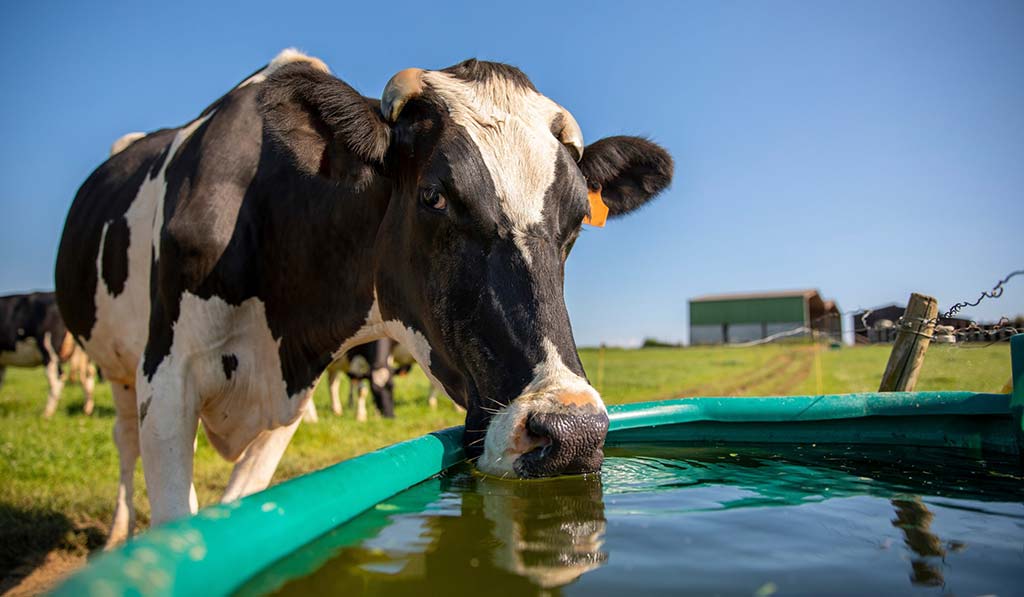 Discover the long-term impacts of heat stress on dairy cattle. Our comprehensive guide explores the effects and offers actionable solutions. Are your cows at risk?
Discover the long-term impacts of heat stress on dairy cattle. Our comprehensive guide explores the effects and offers actionable solutions. Are your cows at risk? Discover how a shorter dry period can enhance rumen function in dairy cattle both pre-calving and post-calving. Learn the benefits and implications today.
Discover how a shorter dry period can enhance rumen function in dairy cattle both pre-calving and post-calving. Learn the benefits and implications today.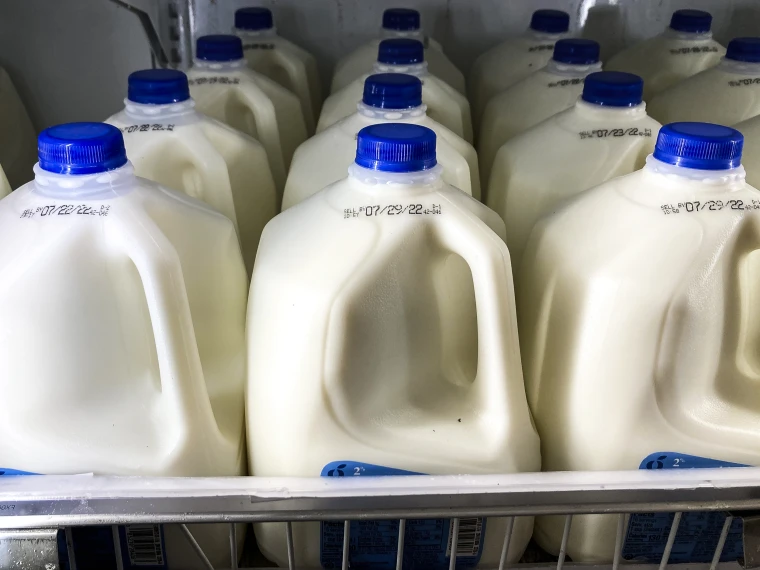 Concerned about the H5N1 virus in your milk? Rest easy as the FDA confirms U.S. milk supply is safe in the latest test results. Learn more here.
Concerned about the H5N1 virus in your milk? Rest easy as the FDA confirms U.S. milk supply is safe in the latest test results. Learn more here.
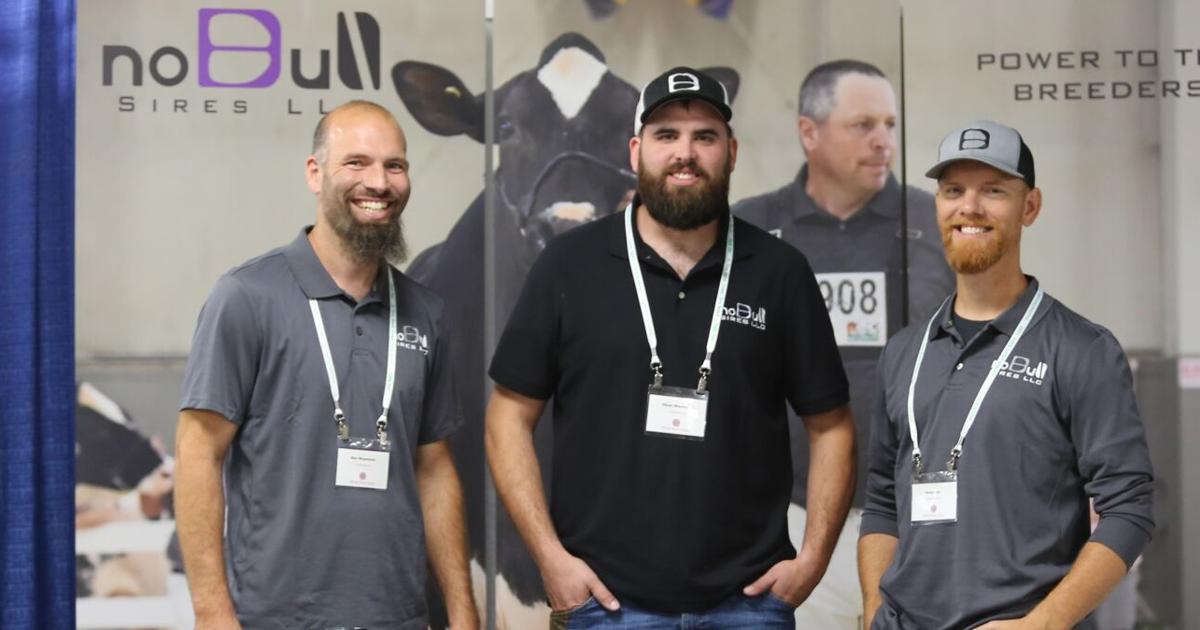 Dive into the intricacies of the NoBull Ultrasound Case, potentially heading to the State Supreme Court. Will justice prevail? Find out more.
Dive into the intricacies of the NoBull Ultrasound Case, potentially heading to the State Supreme Court. Will justice prevail? Find out more. Discover practical strategies to reduce methane emissions from dairy cows. Can we mitigate rumen methane production? Learn more in our in-depth guide.
Discover practical strategies to reduce methane emissions from dairy cows. Can we mitigate rumen methane production? Learn more in our in-depth guide.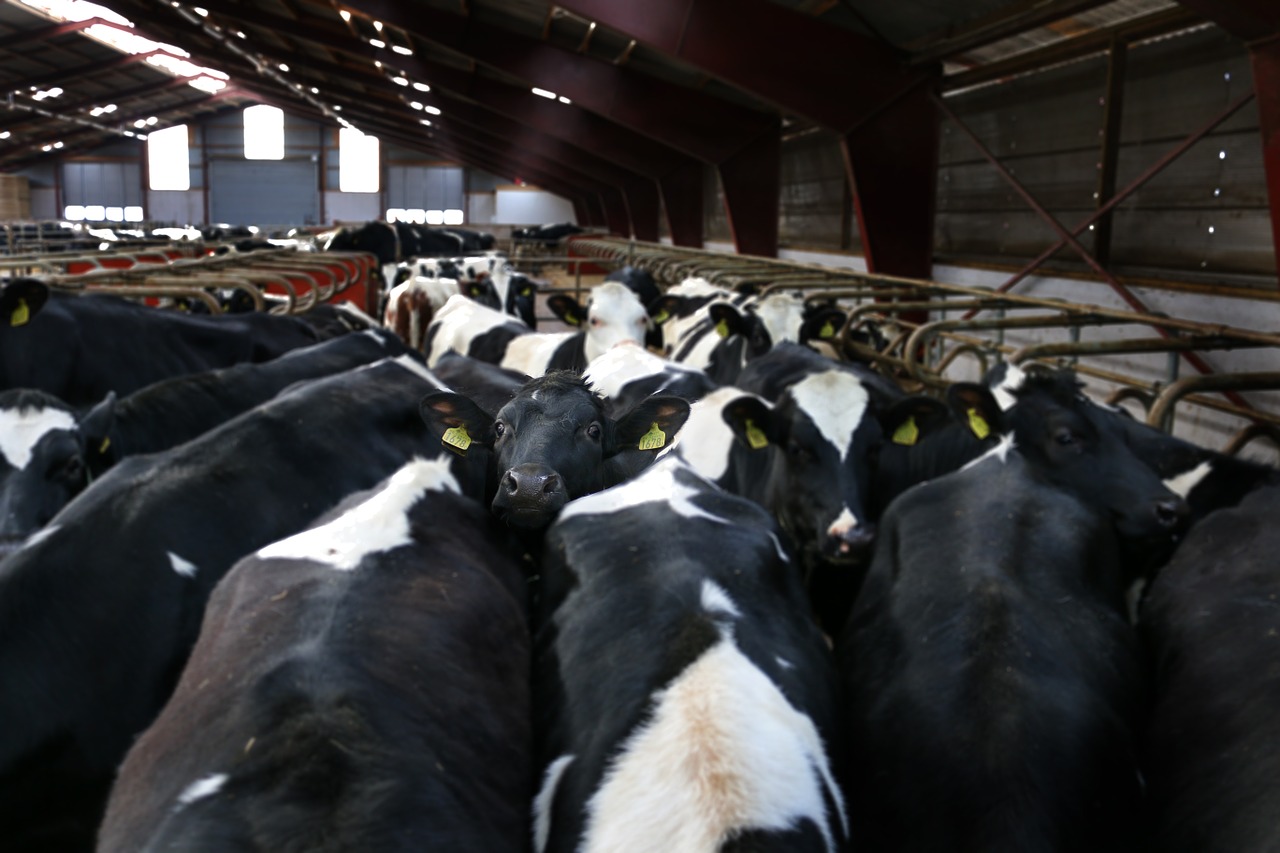 Ever wondered why cows bunch together? Dive into our article to unravel the stress factors behind this intriguing behavior. Learn more today.
Ever wondered why cows bunch together? Dive into our article to unravel the stress factors behind this intriguing behavior. Learn more today. Discover how GameSquare and Dairy MAX are revolutionizing Fortnite’s Farm Tycoon with their exciting new UEFN world-building map campaign. Will you join the fun?
Discover how GameSquare and Dairy MAX are revolutionizing Fortnite’s Farm Tycoon with their exciting new UEFN world-building map campaign. Will you join the fun?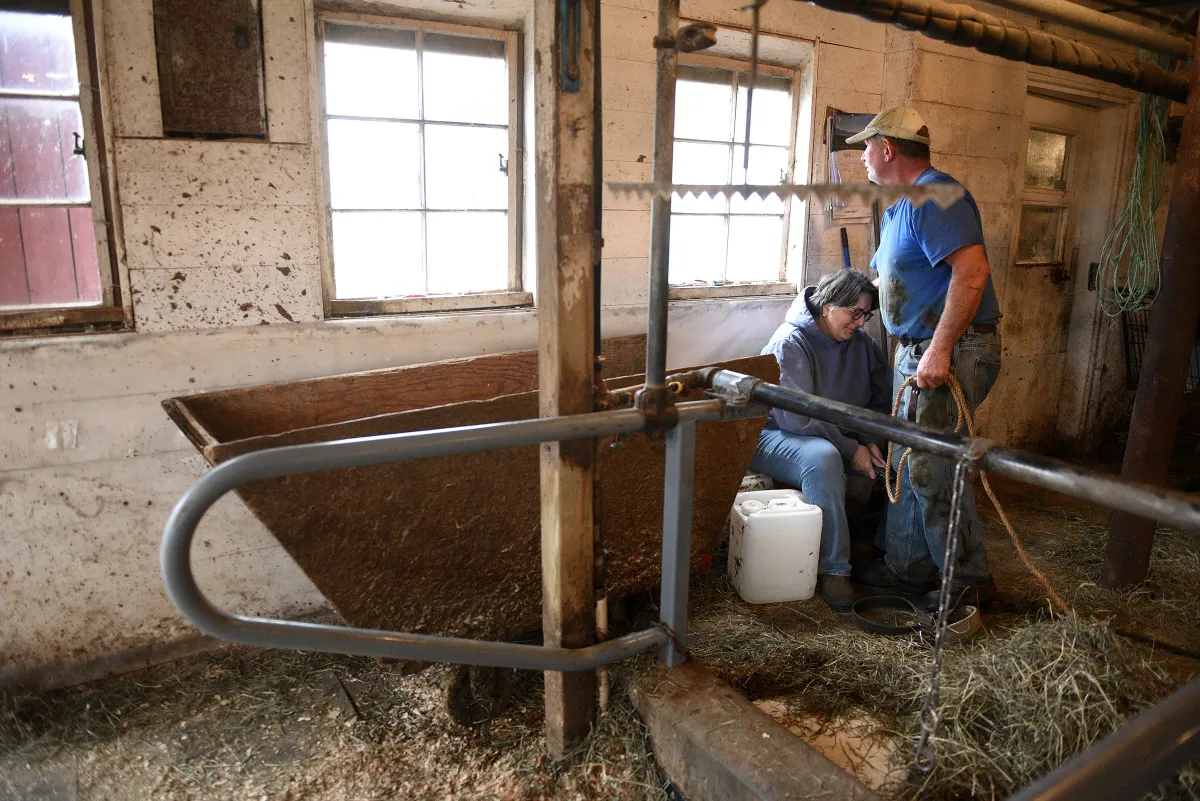 Explore the uncertain future of Hartford’s last dairy farm as the herd departs. Will the city lose its agricultural heritage? Dive into this compelling story.
Explore the uncertain future of Hartford’s last dairy farm as the herd departs. Will the city lose its agricultural heritage? Dive into this compelling story. Discover how milk from sick cows in North Texas led to fatal illness in over half of 24 domestic cats. Learn more.
Discover how milk from sick cows in North Texas led to fatal illness in over half of 24 domestic cats. Learn more. Could avian influenza jump species and infect cows globally? Explore the potential international impact of this unprecedented event in our in-depth analysis.
Could avian influenza jump species and infect cows globally? Explore the potential international impact of this unprecedented event in our in-depth analysis.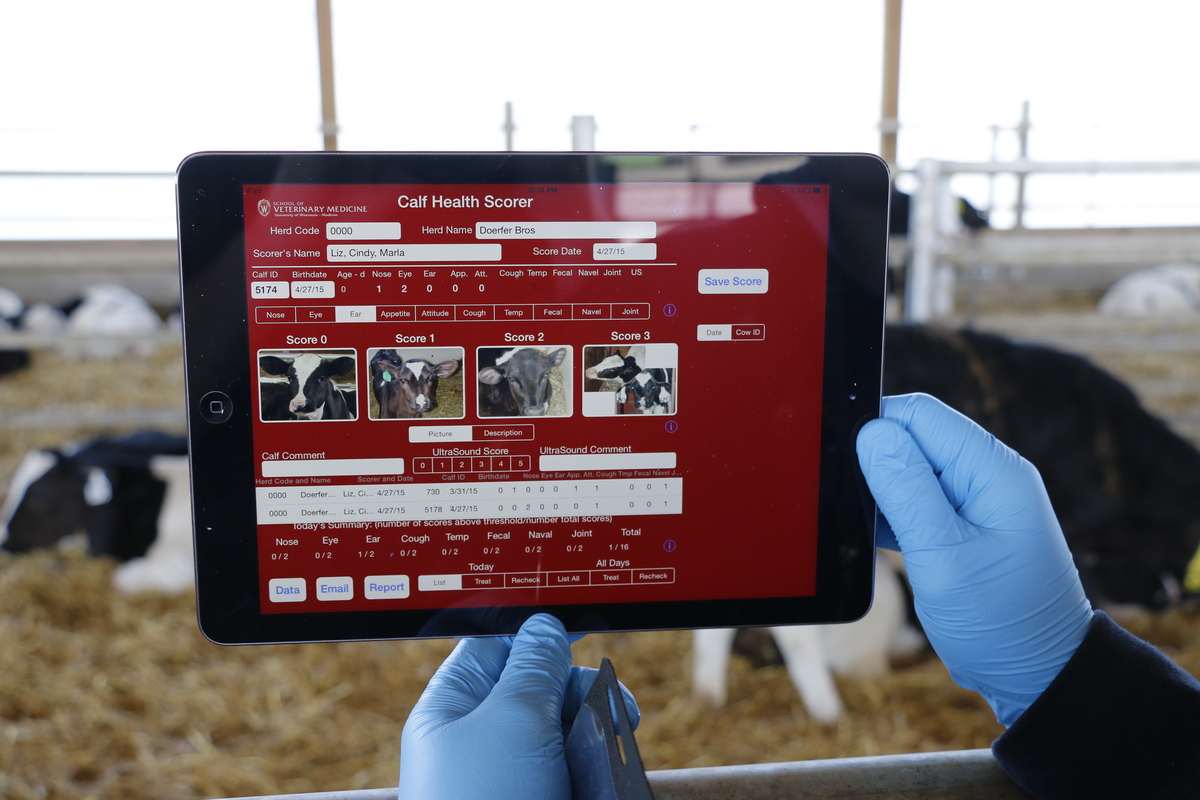 Discover how digital medicine is revolutionizing dairy farming. Can it provide easier access to veterinary care? Dive in to unlock the future of farming.
Discover how digital medicine is revolutionizing dairy farming. Can it provide easier access to veterinary care? Dive in to unlock the future of farming. Discover the final chapter of Van Dairy’s legacy as the last piece of the historic Tasmanian dairy farm, Woolnorth, goes on sale. Will you be part of this story?
Discover the final chapter of Van Dairy’s legacy as the last piece of the historic Tasmanian dairy farm, Woolnorth, goes on sale. Will you be part of this story?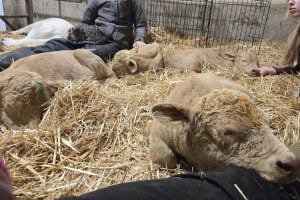 Discover the rare tale of a Saskatchewan beef cow birthing quadruplet heifers. Will they all survive? Dive into this captivating story to find out.
Discover the rare tale of a Saskatchewan beef cow birthing quadruplet heifers. Will they all survive? Dive into this captivating story to find out. Discover the latest updates on the US’s proactive measures to test ground beef amid bird flu outbreaks in dairy cows. Will your state be affected? Find out now.
Discover the latest updates on the US’s proactive measures to test ground beef amid bird flu outbreaks in dairy cows. Will your state be affected? Find out now.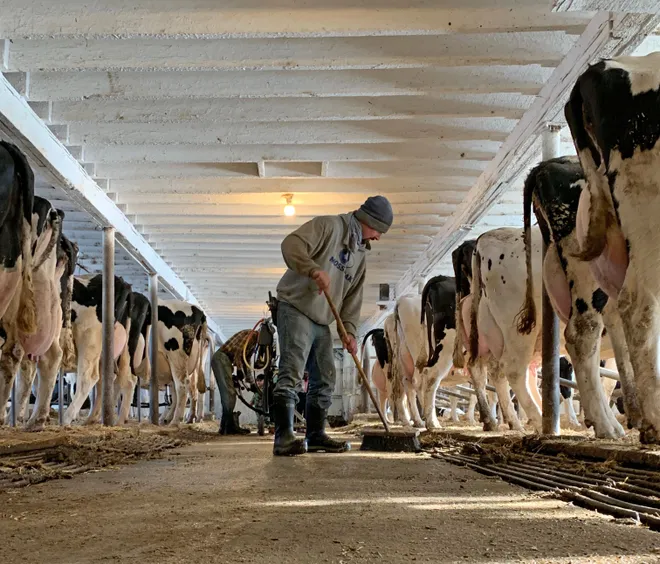 Discover why dairy farmers hesitate to report potential avian flu cases. Uncover the reality behind this reluctance and join the conversation for change.
Discover why dairy farmers hesitate to report potential avian flu cases. Uncover the reality behind this reluctance and join the conversation for change.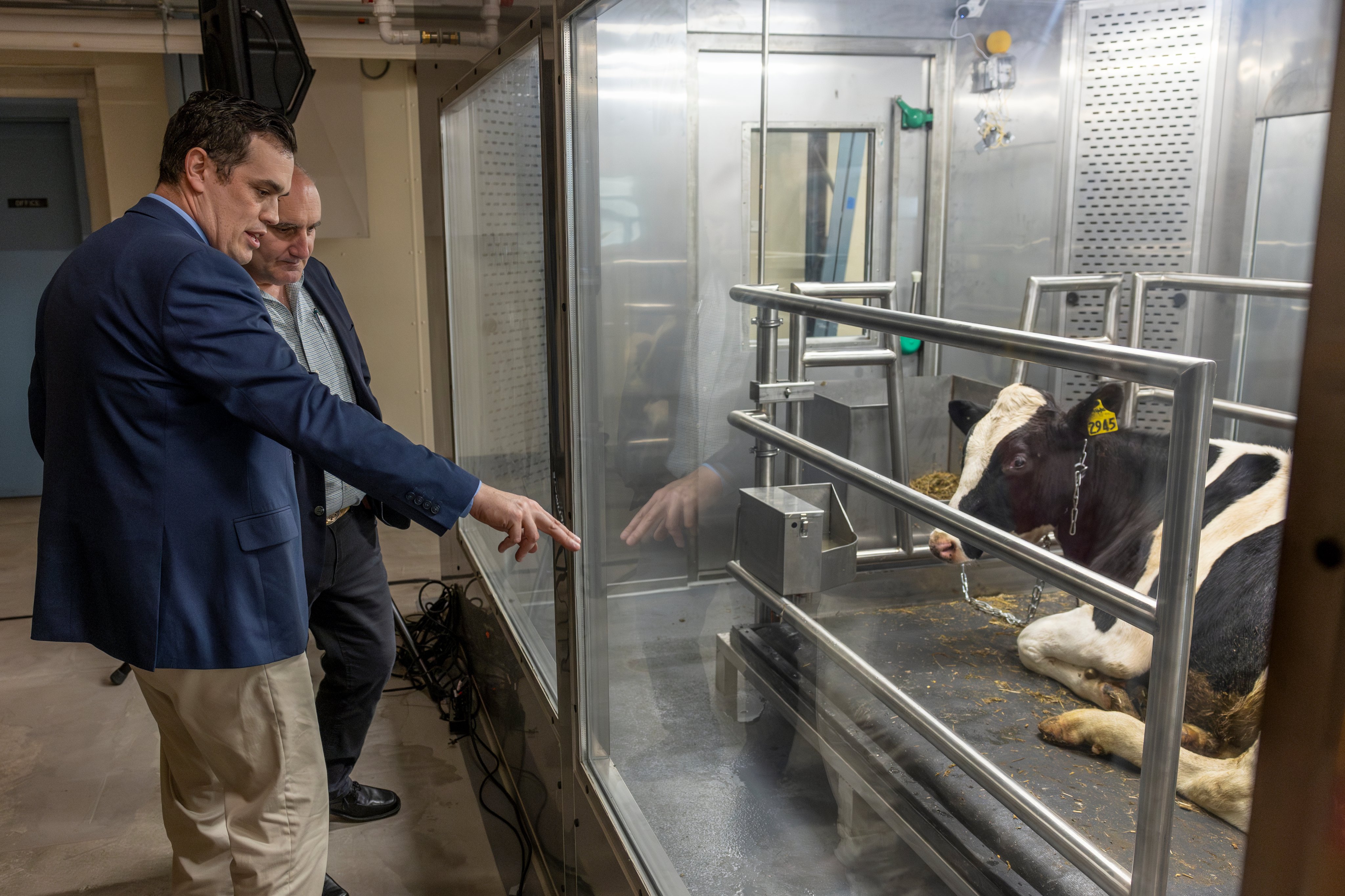 Discover how the first US facility is revolutionizing methane reduction with respiration stalls. Curious about this groundbreaking approach? Dive in to learn more.
Discover how the first US facility is revolutionizing methane reduction with respiration stalls. Curious about this groundbreaking approach? Dive in to learn more.
 Discover the key differences between mastitis and teat sealant residue at freshening. Learn to accurately identify and manage these conditions in dairy cows.
Discover the key differences between mastitis and teat sealant residue at freshening. Learn to accurately identify and manage these conditions in dairy cows.



